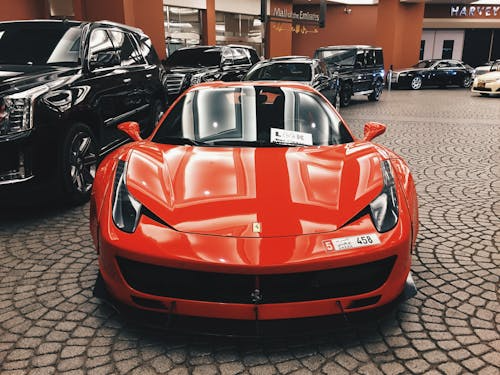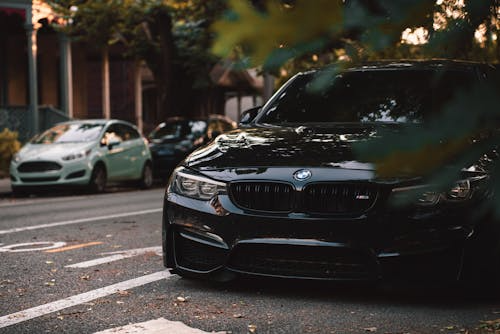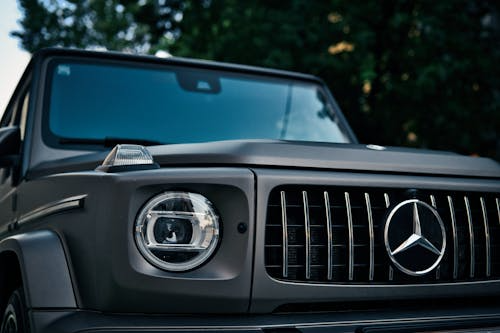A Complete Guide to Night Driving Lights: How to Properly Use Low Beams, High Beams, and Fog Lights|BLIAUTO 2025 Professional Guide
Bliauto 2025 guide: A Complete Guide to Night Driving Lights—learn proper use of low beams, high beams, and fog lights. Expert tips from brand manufacturers of driving lights and manufacturing driving lights for safer night driving.
- I. Introduction: Why Pay Attention to Nighttime Lighting?
- II. Main Types of Automotive Lights and Their Functions
- III. Proper Usage of Low Beams
- 1. When should you turn on low beams?
- 2. Common Misconceptions
- IV. Proper Usage of High Beams
- 1. When should you use high beams?
- 2. When must you switch off high beams?
- 3. Common Misconceptions
- V. Proper Usage of Fog Lights
- 1. When should you use fog lights?
- 2. Limitations of Fog Lights
- 3. Common Misconceptions
- VI. Laws and Regulations on Headlight Use
- VII. Common Questions & Answers (Q&A)
- VIII. Tips for Safer Night Driving
- IX. Conclusion
I. Introduction: Why Pay Attention to Nighttime Lighting?
Among all driving conditions, nighttime driving is one of the most challenging. Statistics show that the rate of traffic accidents at night is significantly higher than during the day, and a large portion of them are closely related to improper use of vehicle lights.
Some drivers keep their high beams on all the time, blinding oncoming drivers and greatly increasing the risk of collisions.
Others rely too much on low beams, refusing to switch to high beams even on dark, unlit country roads, which leads to poor visibility and missed hazards.
Still others mistakenly turn on hazard flashers in foggy weather, forgetting that fog lights are the real solution.
Therefore, correct use of low beams, high beams, and fog lights not only determines whether you can see clearly, but also whether others can see you. In this article, BLIAUTO will provide a comprehensive explanation of the types of night driving lights, their functions, proper usage, legal requirements, and answers to common questions, helping you drive safely and responsibly.
II. Main Types of Automotive Lights and Their Functions
Before diving into how to use them correctly, let’s briefly review the most common vehicle lights used at night:
Low Beam (Dipped Beam)
Illuminates up to 30–40 meters, angled downward to avoid directly shining into oncoming traffic.
Mainly used on urban roads, during car-following, and when meeting oncoming vehicles.
High Beam (Main Beam)
Projects light over 100 meters ahead, with a strong and straight beam.
Used on rural roads, highways, and unlit areas.
Fog Light
Wide and low beam with strong penetration, often yellow or white.
Specifically designed for fog, heavy rain, snow, or low-visibility conditions under 100 meters.
Daytime Running Light (DRL)
Intended to make your vehicle visible to others, not to light up the road.
Commonly used during the day, with limited nighttime function.
Position Light / Parking Light
Helps define the vehicle’s outline in dim conditions, rather than illuminating the road.
Used when parking or on narrow roads to be seen by others.
In this article, we will focus on the first three: low beams, high beams, and fog lights.

III. Proper Usage of Low Beams
Low beams are the most frequently used headlights, essential for almost all nighttime city driving.
1. When should you turn on low beams?
Driving on urban roads with street lighting.
When meeting oncoming traffic.
When following another vehicle closely, to avoid dazzling them via rear-view mirrors.
In tunnels, underground garages, or dimly lit areas.
During daytime rain or fog when visibility is reduced.
2. Common Misconceptions
Mistake 1: Using DRLs instead of low beams at night.
→ Wrong! DRLs do not provide illumination; low beams are mandatory at night.
Mistake 2: Thinking low beams are too dim, so keeping high beams on instead.
→ Wrong! Low beams are the correct choice for city driving. If dim, clean the lens, adjust the aim, or upgrade to brighter bulbs.
IV. Proper Usage of High Beams
High beams (often called “main beams”) illuminate far ahead, making them ideal for dark roads—but also the most controversial lights.
1. When should you use high beams?
On rural, mountain, or country roads at night when there is no oncoming traffic.
On unlit sections of highways.
In pitch-dark conditions to detect pedestrians, animals, or obstacles early.
2. When must you switch off high beams?
When meeting oncoming traffic.
When following another vehicle closely.
On urban streets with street lighting.
In fog, rain, or snow, since high beams cause glare and reduce visibility.
3. Common Misconceptions
Mistake 1: High beams are safer, so just leave them on.
→ Wrong! High beams can temporarily blind oncoming drivers, creating major danger.
Mistake 2: Using high beams to “warn” the car ahead.
→ Rude and unsafe—use a quick flash of high beams or the horn instead of prolonged exposure.

V. Proper Usage of Fog Lights
Fog lights are often underestimated, and many drivers misuse them as “decorative lights.”
1. When should you use fog lights?
In fog, heavy rain, sandstorms, or snow when visibility is below 100 meters.
On highways at night when suddenly entering thick fog.
2. Limitations of Fog Lights
Fog lights have concentrated beams, unsuitable for clear nights.
Using them unnecessarily in the city can dazzle drivers behind you.
3. Common Misconceptions
Mistake 1: Keeping fog lights on for decoration.
→ Wrong! Unnecessary use of fog lights is a violation in many regions.
Mistake 2: Believing fog lights are brighter than low beams and can replace them.
→ Wrong! Fog lights cover a limited range, designed only for poor visibility.
VI. Laws and Regulations on Headlight Use
In China, the Road Traffic Safety Law specifies:
At night or during fog, rain, snow, dust, or hail with reduced visibility, vehicles must use headlights.
Low beams must be used when meeting oncoming traffic.
Improper use of lights may result in warnings, fines, or penalty points.
Internationally:
U.S.: Some states require low beams and fog lights when visibility drops below 150 meters.
Europe: Strict regulations limit misuse of high beams; some countries mandate automatic high-beam assist systems.

VII. Common Questions & Answers (Q&A)
Q1: Can low beams and high beams be used at the same time?
→ Usually no, most cars only allow one at a time. Some premium models offer bi-beam systems or auxiliary high beams.
Q2: What if oncoming cars keep their high beams on?
→ Briefly flash your high beams to remind them. Avoid staring directly, look slightly to the right side of the road, and slow down if necessary.
Q3: Are high beams better in the rain?
→ No, they cause glare from water droplets, reducing visibility. Use low beams and fog lights instead.
Q4: Are automatic headlights and auto high-beam systems reliable?
→ Reliability is improving, but drivers should not fully rely on automation—manual intervention is still necessary.
Q5: LED headlights are brighter than halogen—does that mean I can use them however I want?
→ No. Brightness is not the issue—proper switching and usage is key. Misuse of any light creates danger.
VIII. Tips for Safer Night Driving
Keep your windshield and headlights clean—dust and dirt severely reduce brightness.
Check headlight alignment to avoid dazzling others.
Avoid illegal retrofitting of overly bright HID or LED lamps; ensure compliance with standards.
On highways at night, switch between high and low beams appropriately.
Remember this principle: See clearly, and let others see you.
IX. Conclusion
Night driving is less about speed and more about understanding and properly using lights:
Low Beams: The essential and safest choice for city roads.
High Beams: Powerful for unlit roads but require strict control.
Fog Lights: A lifesaver in low-visibility conditions—never misuse them.
Using headlights correctly is both a responsibility for your own safety and a courtesy to others. BLIAUTO recommends all drivers develop the habit of reasonable lighting and civilized driving, which not only enhances safety but also helps reduce unnecessary road conflicts.
Learn more about our automotive lighting products.

Bliauto Motorcycle Headlight - Model C1H-WA: High-quality LED design from leading brand manufacturers of motorcycle headlights. Precision Manufacturing Motorcycle Headlight ensures high visibility, durability, and easy fit for all riders.

Bliauto Motorcycle Headlight - Model C1H-HL: High-quality brand motorcycle headlight with durable LEDs, easy installation, and high-beam performance. Trusted brand manufacturers motorcycle headlights for safety. Choose Manufacturing Motorcycle Headlight quality.

Bliauto JS1 Jump Starter – Reliable Power On-the-Go As a brand manufacturer & wholesale jump starter supplier, Bliauto delivers high-quality portable power solutions. The JS1 Jump Starter provides instant engine starts, USB charging, and durable performance—ideal for emergencies. Trusted by professionals, it’s compact, safe, and backed by expert engineering. Wholesale options are available—power up with Bliauto! Optimized for SEO with target keywords while maintaining clarity and brand authority. Let me know if you'd like refinements!

Bliauto Motorcycle Headlight - Model C2H-LR: high-performance, durable LED beam for safer night riding. As a brand manufacturer of motorcycle LED headlights and a specialist in manufacturing motorcycle LED headlights, Bliauto delivers high-quality brand motorcycle LED headlights.
Connect with Bliauto for Automotive LED Lights Solution
Bliauto is dedicated to designing innovative automotive LED lighting systems. Let's talk about your needs!
© 2025 Bliauto All Rights Reserved.

Bliauto
Bliauto Light
Bliauto
Bliauto Light
Bliauto
Whatsapp: +8618811846160